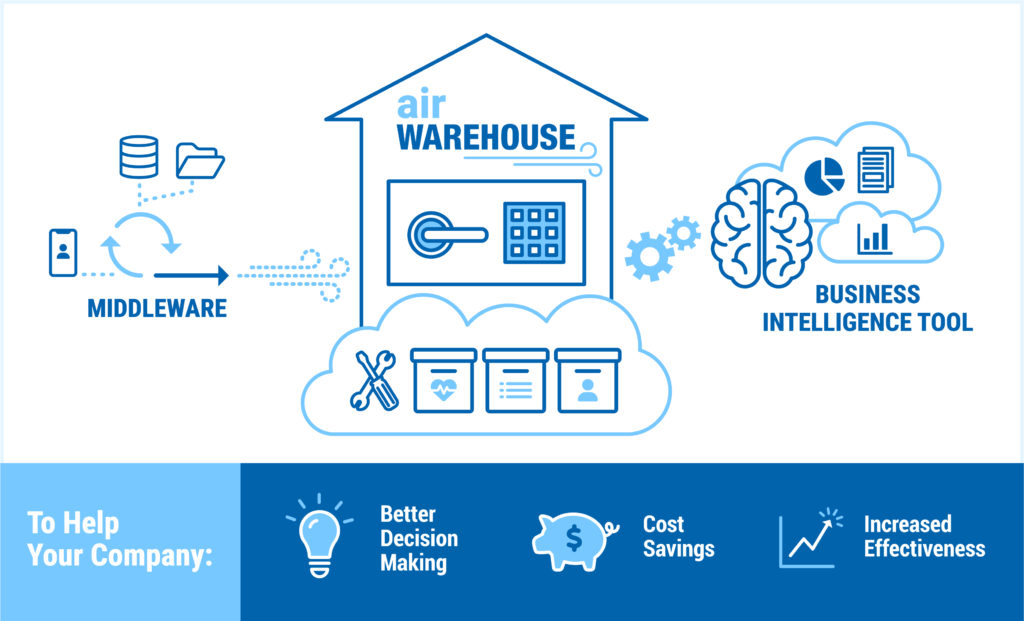In today’s rush to embrace Artificial Intelligence (AI), many organizations jump straight to implementing models and algorithms without laying a solid data foundation. However, the true power of AI lies not just in sophisticated technology, but in the quality and accessibility of the data that fuels it. At the heart of successful AI implementation is the crucial need for robust integration and clean data.
Focus on the Data Foundation
Many companies are caught up in the hype of AI without addressing the underlying data foundation. Without clean, integrated data, AI will not perform as expected and can even lead to problems and inefficiencies. Security is also a major concern, and a strong data foundation is crucial for protecting sensitive information and one of your most important assets.
![]()
The Importance of Master Data Management
Imagine building a house on a shaky foundation. It doesn’t matter how beautiful the structure is; eventually, it will crumble. Similarly, AI initiatives built on fragmented and messy data will inevitably fail to deliver accurate or reliable results. This is where master data management comes into play. Creating a “single source of truth” is essential. Systems need interoperability and integration, which is where middleware solutions like AIR Connect become vital. It brings data together, connecting various sources and hubs (data warehouses and lakes), to establish a solid foundation ready for Machine Learning (ML) and AI.
![]()
Enhancing Data with AI
Once you have a unified data source, you can enhance it with further intelligence. By using connectors for services like Amazon Comprehend and Medical Comprehend, datasets can be enriched with context, sentiment analysis, topics, and categories. Variables like ICD10s and doctor’s notes, which might be missed otherwise, can be analyzed. This also allows connection to generative AI capabilities like Amazon Lex, enabling transactional-level interactions like chatbots and patient question qualification. AIR Connect facilitates the seamless flow of data between websites, APIs, and back-end systems, ensuring real-time and accurate responses.

The Role of the AIR Data Warehouse
A fundamental principle in AI is “garbage in, garbage out.” To avoid this, an AIR Data Warehouse ensures data is deduplicated, clean, and available. With a managed solution, only the highest integrity data enters the system. This clean, high-value dataset becomes an asset, acting as a bedrock for formulating custom foundation models and building out specific AI applications.

Data Transformation and Integration
Data transformation and translation are crucial during integration. Data needs to be consistent, which involves transforming data types and standards (e.g., XML to JSON, HL7 to FHIR) in transit. This also includes transforming unstructured data, like PDFs and images, into structured tables for analytics or simply moving that unstructured data into storage to be analyzed there. AIR Connect plays a key role in this process.

Deduplication and Data Quality
Merging the same users, patients, and orders is vital to ensure data accuracy. The deduplication process guarantees that analytics are applied to clean, reliable data. Once data is in the lakehouse (e.g., Warehouse and S3 bucket), Machine Learning can extract information from unstructured medical PDFs such as clinical trial reports and radiology reports. Medical Comprehend can further help extract health information and link relationships like diagnosis and medications. This not only reduces the cost of processing and coding structured text but also can bring additional oversight to things that might have been overlooked.
AI-Driven Insights and Improvements
AI can analyze both structured and unstructured data to identify trends and improvements in patient care. For instance, it can suggest the next product a patient might need based on their purchase history, driving marketing and automated outreach. AI can also identify gaps in care, improve the efficiency of patient care, and accurately select patients for clinical trials, all while lowering costs.
Practical Applications and Speeding Up Processes
AI can significantly speed up processes like nurse provider note-taking. By transcribing recorded notes and using Medical Comprehend, information can be pushed to the EHR, saving time and allowing providers to focus on patient care. AI can also enhance scheduling and appointment matching, ensuring the right doctor is matched with the right patient. In home healthcare, AI can optimize routing and ensure the correct equipment arrives at the right location.
![]()
AI as an Enhancer, Not a Replacement
It’s important to view AI as an enhancer, not a replacement. For example, in scheduling, AI can act as a checker or validator to ensure rules are being followed and the best care is provided, rather than making the initial decision. AI models can be fed data, tested, and then models can be tweaked to enhance performance.
Conclusion
In conclusion, integration and clean data are the cornerstones of successful AI implementation. By focusing on master data management, data transformation, and ensuring data quality, organizations can unlock the true potential of AI. Rather than rushing into deploying AI models, businesses should prioritize building a solid data foundation that supports accurate, reliable, and insightful AI applications.
Contact us for more information on integration, AI, and data management best practices.
